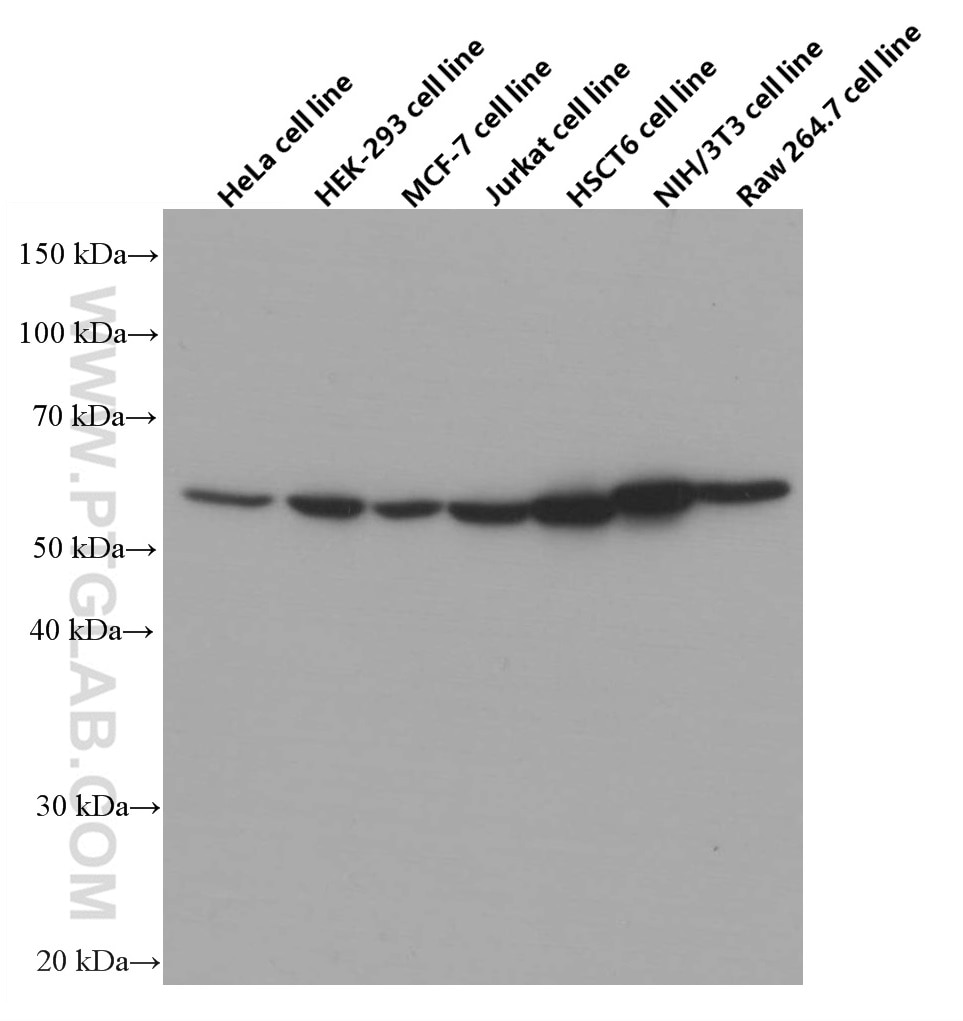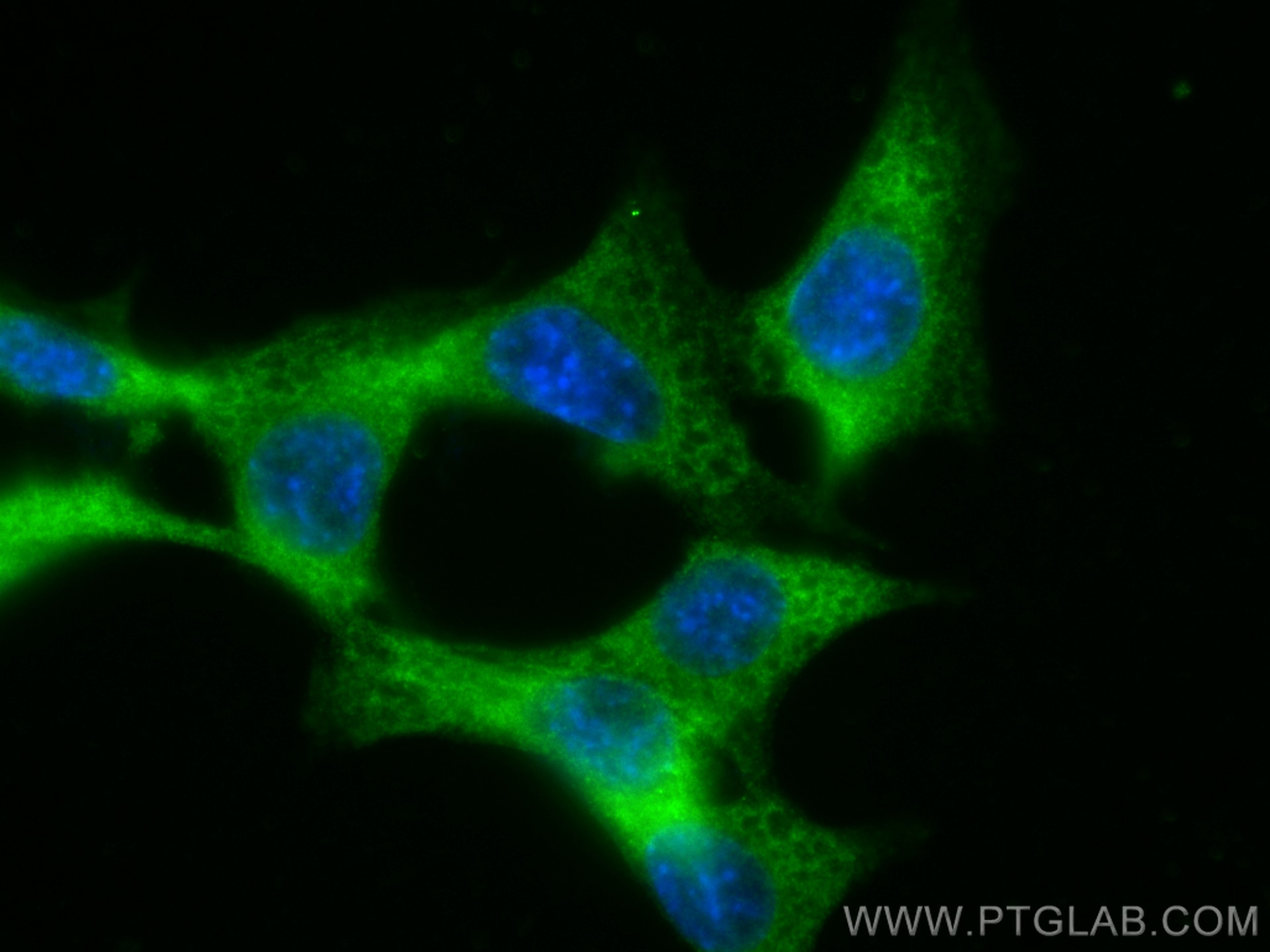Product Information
66637-1-PBS targets STK3/MST2 in WB, IHC, IF/ICC, Indirect ELISA applications and shows reactivity with human, mouse, rat samples.
| Tested Reactivity | human, mouse, rat |
| Host / Isotype | Mouse / IgG2a |
| Class | Monoclonal |
| Type | Antibody |
| Immunogen |
CatNo: Ag2741 Product name: Recombinant human STK3 protein Source: e coli.-derived, PGEX-4T Tag: GST Domain: 1-306 aa of BC010640 Sequence: MEQPPAPKSKLKKLSEDSLTKQPEEVFDVLEKLGEGSYGSVFKAIHKESGQVVAIKQVPVESDLQEIIKEISIMQQCDSPYVVKYYGSYFKNTDLWIVMEYCGAGSVSDIIRLRNKTLIEDEIATILKSTLKGLEYLHFMRKIHRDIKAGNILLNTEGHAKLADFGVAGQLTDTMAKRNTVIGTPFWMAPEVIQEIGYNCVADIWSLGITSIEMAEGKPPYADIHPMRAIFMIPTNPPPTFRKPELWSDDFTDFVKKCLVKNPEQRATATQLLQHPFIKNAKPVSILRDLITEAMEIKAKRHEEQQ Predict reactive species |
| Full Name | serine/threonine kinase 3 (STE20 homolog, yeast) |
| Calculated Molecular Weight | 491 aa, 56 kDa |
| Observed Molecular Weight | 56-63 kDa |
| GenBank Accession Number | BC010640 |
| Gene Symbol | STK3 |
| Gene ID (NCBI) | 6788 |
| RRID | AB_2881996 |
| Conjugate | Unconjugated |
| Form | Liquid |
| Purification Method | Protein A purification |
| UNIPROT ID | Q13188 |
| Storage Buffer | PBS only, pH 7.3. |
| Storage Conditions | Store at -80°C. |
Background Information
The protein encoded by STK3 gene is a key serine/threonine kinase, and its protein product can be cleaved by caspase in the process of apoptosis, and the inhibitory C-terminal part is removed, and the N-terminal part is transferred to the nucleus to form homodimer, which becomes an active kinase and promotes chromatin condensation in the process of apoptosis. STK3 is one of the core components of Hippo signaling pathway, which plays a key role in controlling cell proliferation, apoptosis and tissue growth. In the Hippo signaling pathway, STK3 forms a cascade reaction with STK4, LATS1/2 and other kinases, phosphorylates and activates LATS1/2, and then inhibits transcription coactivators YAP and TAZ, thus controlling cell growth and preventing cancer progression. STK3 and STK4(MST1) are similar in structure and function. They have conserved amino-terminal kinase domains, carboxyl-terminal regulatory domains and interaction domains. The antibody can cross-recognize STK4.












